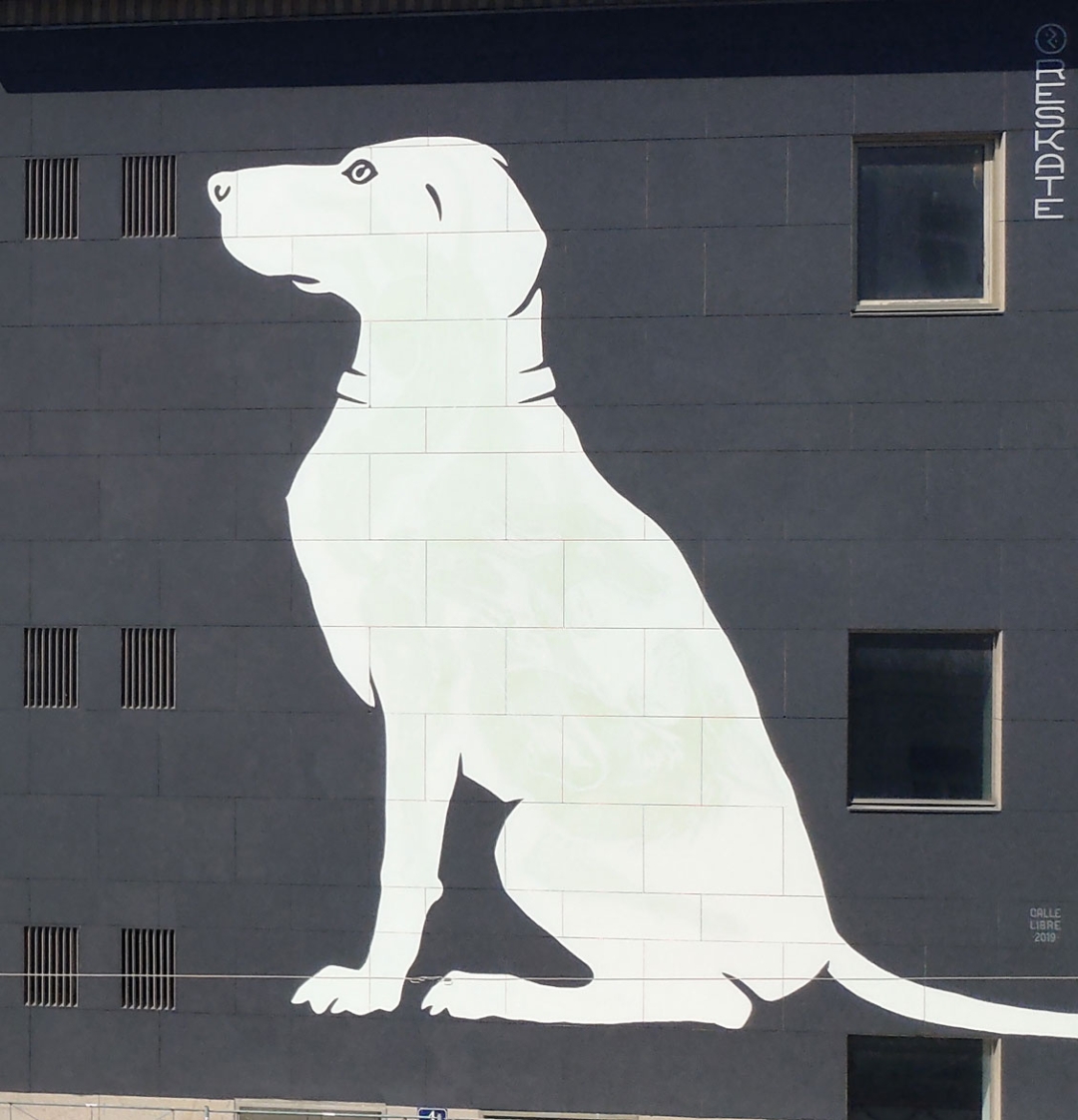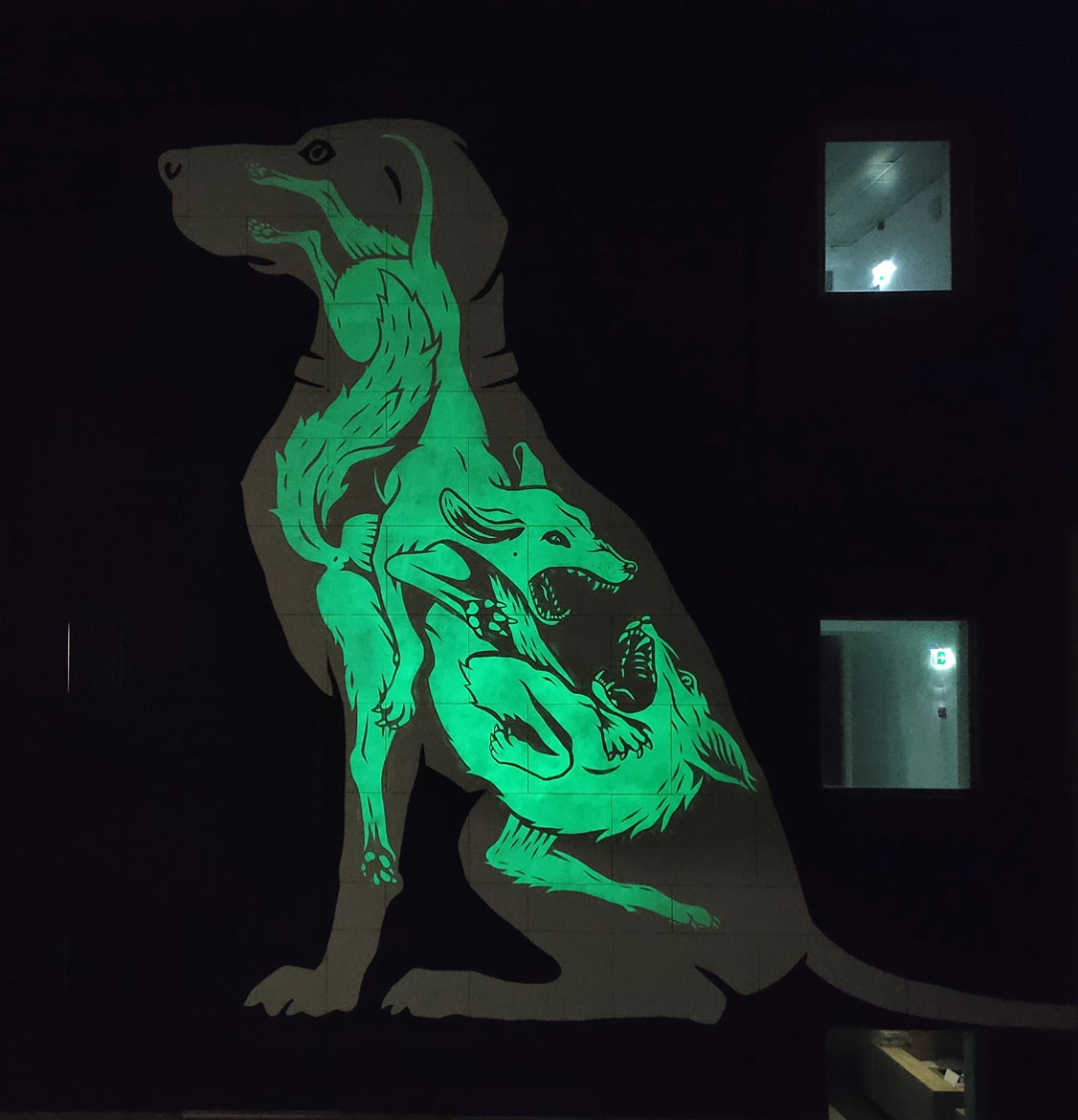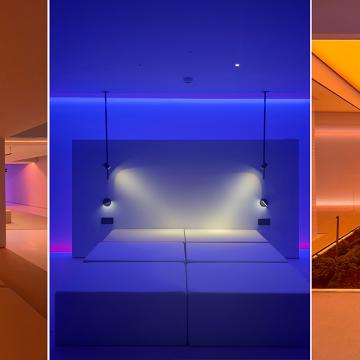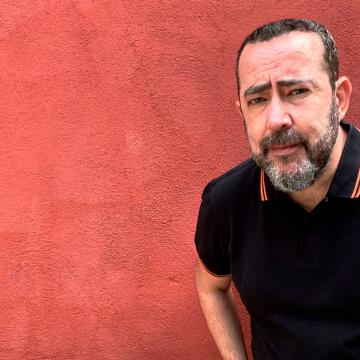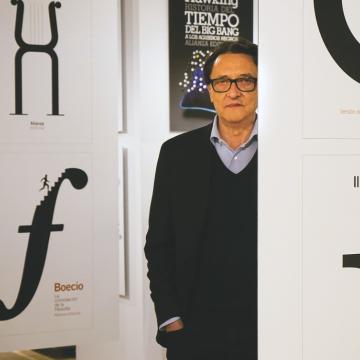Since opening on the 17th of April, Espacio Iberia has welcomed dozens of guests with one thing in common: their infinite talent. Talent that has inspired all the people who have sat there to listen to them.
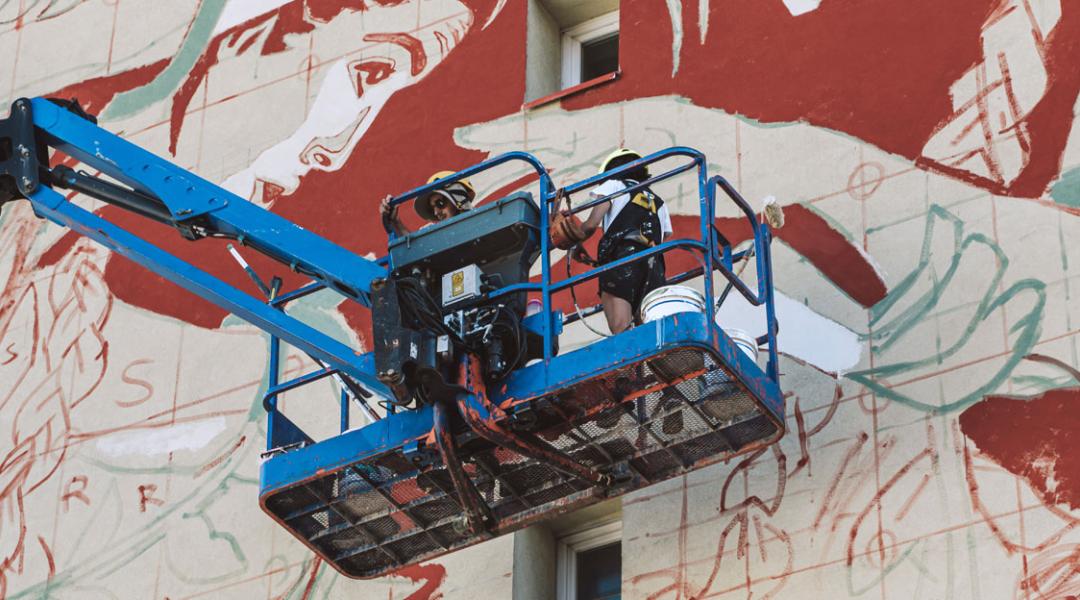
María and Javier took the leap from design to public art with murals that have taken them to several cities around the world. Creations that, under the umbrella of Reskate Studio, seek to attract the public gaze and awaken consciences while reinforcing the place’s identity. They’re inspired by the past and they recover it to keep the memory alive.
The name of this artistic collective is the result of combining and adapting two words that have marked their career: rescate [rescue] and skate. And that’s precisely how Reskate was born. María López (Donostia, 1980), who signs her personal works as Minuskula, and Javier de Riba (Barcelona, 1985) started collaborate in 2009 on a project recycling old skateboards. “At the time we collected boards, cut them down to where the wood was still healthy, and distributed them among illustrators and painters so that they’d use them as canvases. We were the curators, and we created the graphics announcing each exhibition,” they remember.
From skateboards to murals. How has your talent evolved?
Currently, we define ourselves as an art studio specialised in posters, murals, and public art. We work in-studio in Barcelona and also outdoors, painting murals. In fact, we’ve worked on projects in France, the Netherlands, Germany, Austria, Romania, the US, and China. We have two main lines of work. One is the Reaction project, where we work with a retro poster aesthetic applied to murals, and the other is the Harreman project, where we experiment with the expressive capacities of photo-luminescent paint.
“There’s a lot of work to do to recover creative freedom and art’s capacity for critical thinking”
And what’s left of Reskateboarding, that first project?
Like with any profession, over time you perfect techniques and insecurities fade away. Now we have a more well-rounded vision of what we like. We learnt a lot with Reskateboarding and what’s left of it is, above all, good friends that support us.
Reskate combines the talents of Javier and María. Do you complement each other?
We’re both graphic designers and, although María is specialised in typography and Javi in illustration, we both participate in and share all parts of the process. We don’t have a set formula and, depending on the project, we work one way or another. Sometimes one of us has an idea and the other makes the sketches, which we both work on until we’re both happy. When making the murals, we both do everything, from transferring the sketch to the wall to the finishing touches.
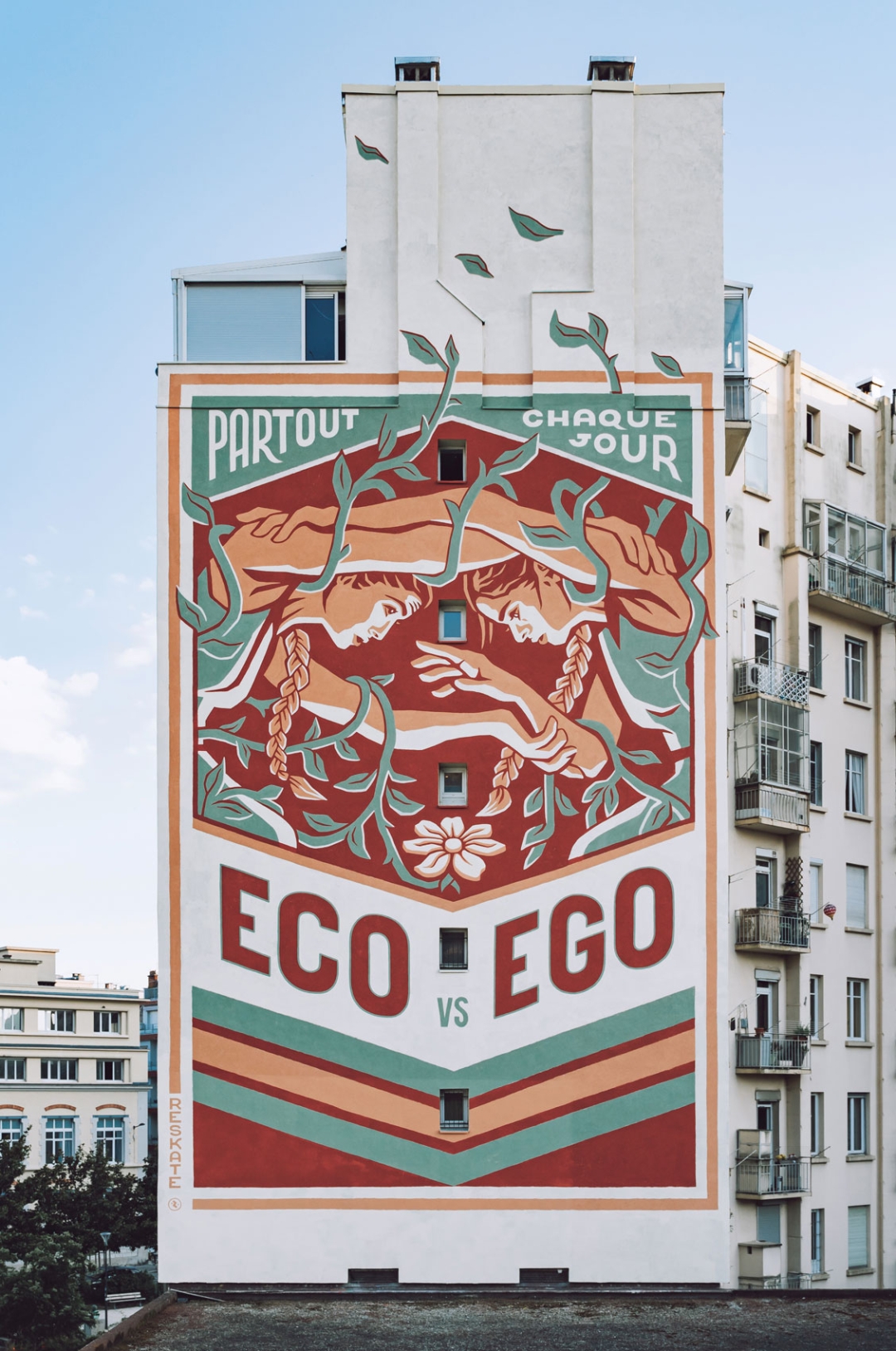
A mural with a retro poster aesthetic created by Reskate Studio in Grenoble (France). © Courtesy of Reskate Studio
Did you always know that you wanted to work in the art world?
Yes, the truth is that this art trend has always existed and over the years we’ve noticed how we’ve gotten closer to these kinds of projects.
How do you understand art and what do you think it is currently experiencing?
At Reskate we understand art as a reflection of society. Right now, it tends to share an individualistic view, which is uncommitted and sometimes a bit frivolous. This vision encourages us to work in the opposite direction: to put our art at the service of collective concerns, to raise awareness, and set ourselves goals. Certain attacks on freedom of speech have led to self-censorship and harsher messages being neutralised. There’s a lot of work to do to recover creative freedom and art’s capacity for critical thinking.
What must a project involve for you to accept it?
It’s important for us to have creative freedom so that we can offer the best of ourselves. To take risks with proposals that make an impact. Cities tend towards grey and neutrality instead of betting on diversity. It’s also important that commissions are aligned with our values, for them to be projects that are aware of the environment and, above all, respectful of human rights.
“We put our work at the service of a place, adding our voice to its demands, or reinforcing its identity”
And what goals do you set yourselves when taking them on?
Our purpose is to attract the public gaze with an enjoyable aesthetic and convey a message that awakens consciences. We put our work at the service of a place, adding our voice to its demands, or reinforcing its identity. Equally, we try to add distinguishing factors to public spaces, improving them and making them more attractive and inspiring for citizens.
What are you influenced by, and which values move you?
Our training is based on graphic design, illustration, and typography, tools that are usually used with commercial aims which we use to take back the public space in favour of the common good. We’re often inspired by stories from the past. Bringing them back and offering an image that can represent them seems really powerful to us, since this way we learn from the past and keep the memory alive. We usually talk about nature, pop culture, and historical memory. When we paint in a place that has its own minority language, we take care to give it its own space, for example.
And what skills does someone who wants to work in the art world need?
Willingness to learn and time to invest in it. The main privilege is having time and the big challenge is not isolating oneself. It’s a job that can be very lonely and problems often become individualised. It’s important to receive and give support to other fellow artists and create a network to share experiences. This protects the industry and reinforces quality, both of working conditions and projects.
Which project represented a turning point in your career?
In 2015, we were offered an artistic residency in Vienna with the project Reskateboarding. We accepted the invitation, but decided to suggest another project, one where we were 100% the creators. Until then, we always remained in the background and fancied being authors. That’s where the Harreman project came from, where we worked with photo-luminescent paint offering a second reading of each piece in the dark and which we still travel with around the world today.
“We like the idea that with our murals we’re sending messages to the archaeologists of the future”
And which projects do you have in mind now?
Now we want to enrich the Reaction project, with murals and handprinted works with a retro poster aesthetic that combine illustrations and letterings with a meaningful message. We also want to make murals in minority languages, like Asturian, Aranese, or Romani. We’re looking for locations that are interested in our work to be able to make site-specific murals.
To conclude, if you weren’t working in the world of design, what would you be doing?
When we were little, we both wanted to be archaeologists. We like the idea that with our murals we’re sending messages to the archaeologists of the future, so they’ll know what concerned people or what languages were spoken.
